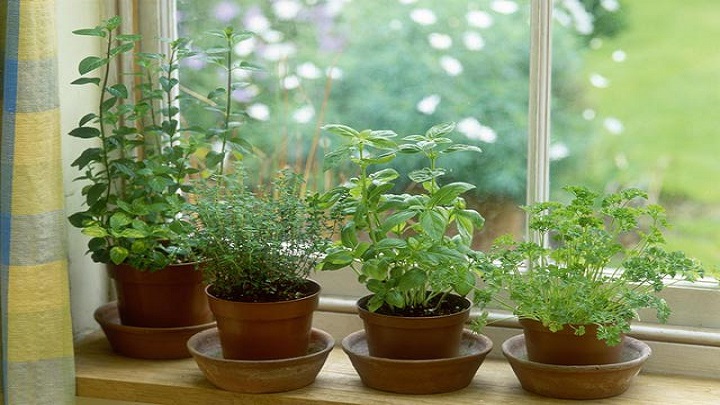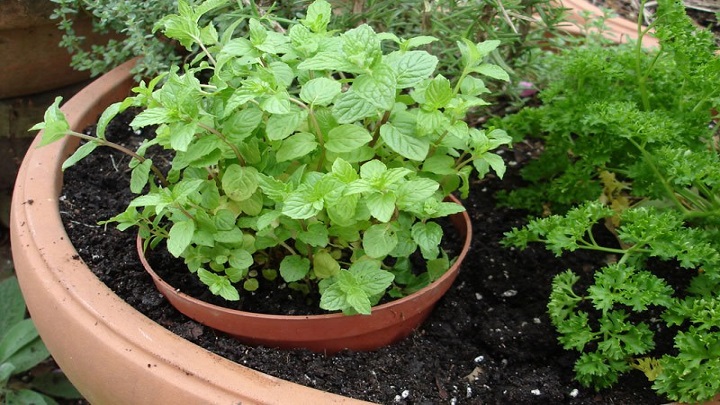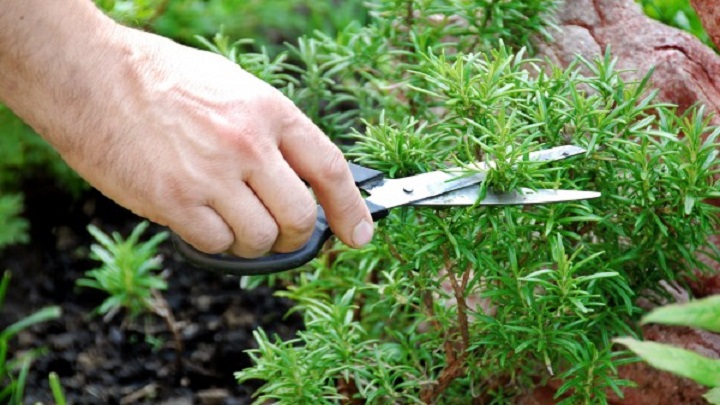They breathe air and enhance all dishes. Who is that? The herbs, of course. Find out how you can planting and harvest your own fresh herbs in 6 easy steps.
1. Create a flowerbed of yesteryear
Arrange your aromatic herb spiral in the spring or fall on a floor area of at least 3 square meters.
- Draw the plot, and then start with the wet area.
- At the beginning of the spiral, create a small pool about 80 cm deep.
- Tap it with a special pelvic cover, fixed with stones.
- Then remove the soil from the remaining area on the depth of a shovel, and then fill this space with a mixture of sand and humus.
- In the center of the parterre, form a small mound about 1 m high, which you will fix with stones arranged in a spiral shape. This construction will accumulate heat from the sun, which plants will enjoy later.
- The parterre, which grows from the outside to the inside, must be filled with different substrates, to form distinct zones.

2. Plant the right herbs in the right place
- In the aquatic zone, the soil, rich in clay, is wet or even wet. You will be able to grow watercress, the Veronique Beccabunga, the acre and the water mint;
- The compost-rich, sunny wet zone will welcome chervil, officinal allium, parsley, and mint, common sorrel, round sorrel, chives, chives, yellow rocket and lemon balm.
- In the mid-shade, there is the normal zone, whose soil, composed of dry humus, offers ideal conditions to the following plants: basil, dill, coriander, lavage, lemongrass, oregano, marigold, and hyssop.
- In the dry zone, grow Mediterranean planting. The soil is permeable and water flows naturally downwards. This area welcomes savory, lavender, marjoram, sage and thyme.
- The mint and the Melissa official, among others, have tracing roots, which quickly made invade a whole flowerbed. Better to plant them in terracotta pots to contain their development.
- So the annuals at a different location each year, to avoid soil exhaustion.
- Some herbs must be planted at a good distance from the others. Thus, the lavage can harm neighboring plants, and the bill will not flourish next to the fennel.

3. Use natural fertilizers
In the herb garden, use only natural fertilizers – if you decide to use them.
- Excess fertilizer causes planting to lose some of their aromas.
- A little compost incorporated in the ground or crushed horn dotted on the ground is ample.
You may also like to read: 8 tips to take care of your annual plants
4. Maintain the pit
- These plants are satisfied with little water, but it is important that this water can flow well, for example through gravel drainage under the ground.
- Binder regularly between the herbs to prevent the earth from hardening and the water from trickling without penetrating it.
- A hedge of boxwood, lavender or hyssop will protect your spiral of grass from the wind.
- Shrubs, such as lavender and thyme, should be folded before frost. To prevent aromatic herbs from developing too much, cut them off regularly. Also, watch for the infructescences of certain plants, such as borage.

5. Harvest at the right time
- Pick up roots early in the morning; Seeds and Herbs preferably around noon (when essential oils are most intense) or early afternoon.
- Harvest the seeds of dill, fennel, coriander and lavage as soon as the infructescences turn brown.
- Remove the garlic from the ground before the vegetation dries out: the bulbs will keep better.
- Many herbs must be harvested before flowering, which decreases their flavor, except for lavender, thyme, and oregano, which you will harvest at the time of flowering.
- Lemon balm should be picked in the afternoon when the leaves are most fragrant.

6. Keep the flavors
- Cut the herbs on a wet wooden board – the dry wood absorbs the aromas – or on a plastic board.
- Surrounded by a damp cloth, the herbs are kept for one to three days in the refrigerator’s crisper.
- For longer shelf life, dry, freeze or place in oil.
- Freezing enhances the flavor of some herbs, such as basil, dill, tarragon, sage, and thyme. Therefore, when you incorporate them into a dish, use them sparingly.
Aromatic herbs are fragile; they quickly lose their flavor in the case of misuse. Accommodate them immediately after harvest or purchase, and proceed gently when cutting the tender leaves.




Average Rating